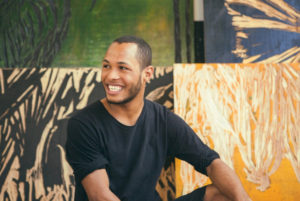
Born in 1996 in Curral Comprido, in the State of Piauí, Santídio moved to São Paulo at the age of eight with his mother. The most striking characteristic of his work is found in the use of several matrices for the composition of the same work, subverting the characteristic of reproducibility of traditional printmaking. Wanting to deepen his knowledge of the art world, he took free art history courses taught by the art critic and curator Rodrigo Naves, who, enchanted by the work of the young engraver, signed the curatorship of his first solo exhibition, at the Galeria Estação, in São Paulo, in 2016. Since then, he has participated in three personal exhibitions and many other collectives in Brazil, the United States and France ("Nous les arbres", Fondation Cartier, 2019).
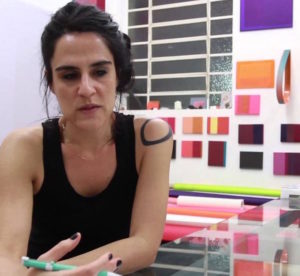
Estela Sokol uses color and light as key elements and combines painting techniques such as encaustic, pigment, spray and enamel with materials such as concrete, beeswax, stone, paraffin, foam, steel, brass, wood, graphite, fabric, ceramic and resin. Changes in tone and different nuances are therefore recurrent in her work. Especially in paintings on plastic sheets that are juxtaposed between transparent and opaque industrial pallets, the PVC sheets are stretched on wooden frames revealing new colors - which establish a dialogue with the heritage of painting and the history of art. She has held solo exhibitions at the Taipa Museum (Macau, China), Gallery 32 (London, England), Galerie Wuensch (Linz, Austria), Palácio das Artes (Belo Horizonte); Paço das Artes, Maria Antônia University Center and São Paulo Cultural Center (São Paulo, Brazil)
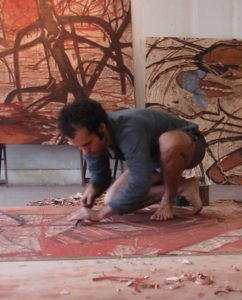
Made on large plywood and boards, Fabrício Lopez's engravings have a monumental scale. They are aimed to engage not only the eyes, but the whole body and the space around it. His artisanal engraving and printing process requires tremendous bodily effort. Large slabs of wood are laid out on the floor, and the artist is literally brought to dive into each matrix. The way in which Fabrício fixes the printed papers directly on the wall, assembled in parts and pasted with a brush, is analogous to that of the popular posters in large urban areas in Brazil. However, his prints move away from references to mass culture and advertisements that encourage fast consumption. On the contrary, his work requires prolonged and attentive contact; full of subtleties, there is nothing immediate and disposable about it. Each of his woodcuts prequire multiple layers and overlays of tones. From the colors emerge evanescent images, icons that hover in the background and between the planes, which occasionally rise to the surface and come to the foreground. From the relationship between the surface of the image and its deeper layers arises the complexity of the prints (Excerpts, Cauê Alves in "Fabricio Lopez: vínculo e abertura".)
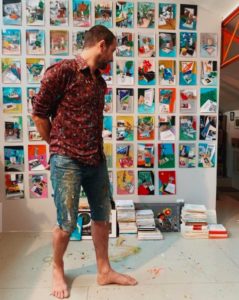
The work of Jérémy Chabaud - born in Lille in 1971 - oscillates between microcosm and macrocosm, abstraction and figuration: between fusional reverie and awareness of separation. Drawings and paintings, but also small sculptures, foldings, installations or performances resonate with a political and poetic questioning of mankind and nature. Nature first, which fascinates and inspires him. In 2010, laureate of a Residency at the Josef and Anni Albers Foundation, Jeremy Chabaud left for a two-month stay in the forests of Connecticut. There he made 130 drawings, all imbued with the experience of isolation and self-work imposed by life in the woods. But also mankind and its artistic hand interests him greatly. Very early on - from the age of 18 - Jeremy seeks individual or collective research activities on artistic questions. His art is often understood as a plural hand and his artistic practice combines personal expression with the creation of gatherings, and the linking of scattered universes that result from it.
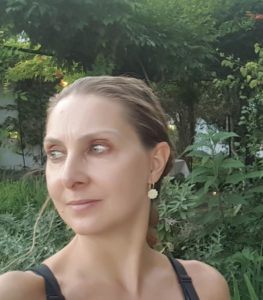
"All my paintings are built on abstract backgrounds. This pure painting step is very important for me : I enter the work and invest the space through it. Then, months of adjustments will come: large and wide patches of color alternating with tighter and denser touches. When it finally works and I find my chords, the painting moves forward to its balance point. I am unable to prepare an image or establish anything that would freeze my creativity. I believe in the work itself, in the vertigo of emptiness and self-questioning. Painting is a way of slowing down time, allowing time to connect with what I feel. I reinterpret nature a lot, vegetation has a hold on me. I see in it something greater than man, what precedes and will survive him, what protects us or wipes us out, a kind of leafy immensity that creates a link, a gigantic chlorophyll memory with which I compose and reinvent a world in which to dream."
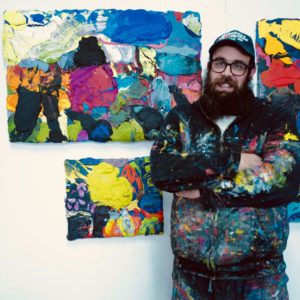
Born in 1981, Jérôme Benitta lives and works in Paris. Graduated from the National School of Art in Rennes, he exhibits his work in Paris and São Paulo, where he has carried out several residencies [Piza Prize 2014, and Ateliê Fidalga in 2015, 2017 and 2019]. Painting is his main medium but he also practices drawing and engraving. He has edited various self-publications in risography and silkscreen printing. Through his painting Jérôme Benitta questions the notions of landscape and geology. He searches for the final composition through different layers of paint or massive colors on the canvas. His works in volume thus advance through accident, slip or avalanche.